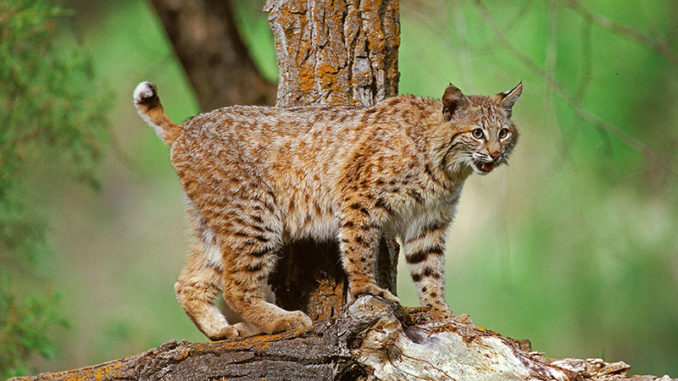
North America’s bobcat (Lynx rufus) is a mysterious and resilient species. With its distinctive appearance and elusive nature, this medium-sized feline has captivated the imagination of wildlife enthusiasts and scientists alike.
The bobcat is a solitary hunter with a robust physique, typically weighing between 15 to 35 pounds. Its most striking feature is its short, stubby tail, which appears to have been “bobbed,” giving the species its name. This tail, measuring just 4 to 7 inches, distinguishes it from its larger cousin, the lynx.
Their coat, designed for concealment, boasts a remarkable range of colors from grayish-brown to reddish-brown, marked with distinctive dark spots and streaks. These markings provide excellent camouflage among the dense forests and rocky terrain they inhabit.
Bobcats are highly adaptable and can thrive in diverse environments across North America, including forests, swamps, deserts, and even urban areas. They are territorial creatures, with ranges spanning from 1 to 15 square miles, depending on food availability and habitat quality.
Predators
Skilled predators, bobcats primarily feast on small mammals such as rabbits and rodents, as well as birds. Their keen senses of sight and hearing, coupled with patience and stealth, enable them to stalk their prey effectively. Bobcats are known for patiently waiting in concealed positions before launching a swift, surprise attack on their prey.
Bobcats are solitary creatures, with males and females coming together only for mating purposes. They communicate through scent markings and vocalizations, including growls, yowls, and hisses, especially during territorial disputes. Although elusive, they are known for their distinctive “bobcat scream,” an eerie sound that echoes through the night. Heard a bigfoot? Nah, it was probably just a bobcat screaming.
Bobcats are considered a species of least concern by the International Union for Conservation of Nature due to their relatively stable population. However, habitat loss, trapping for their fur, and conflicts with humans in urban areas pose ongoing threats.
Throughout North American history, bobcats have held a special place in indigenous cultures, often symbolizing agility, adaptability, and survival skills. They remain an integral part of the ecosystem, helping to control prey populations and maintain the balance of their territories.